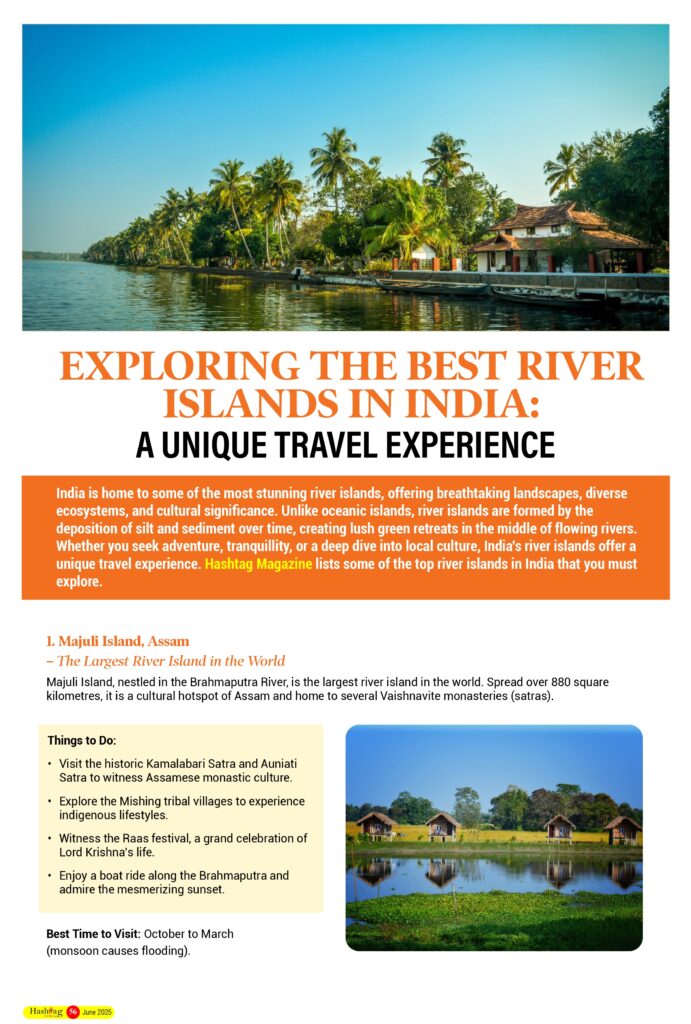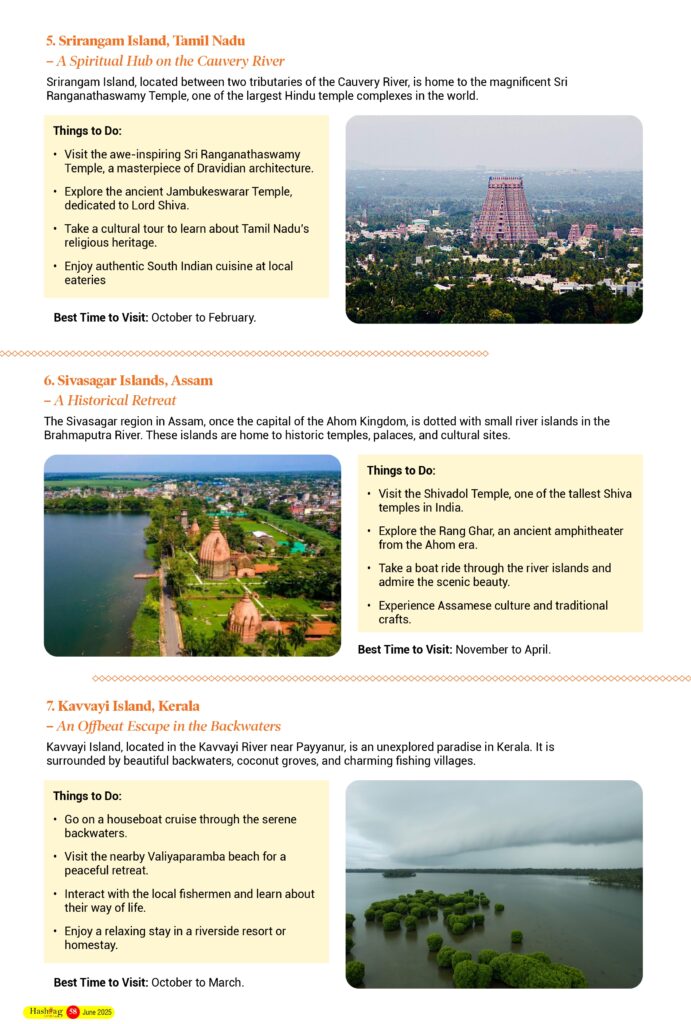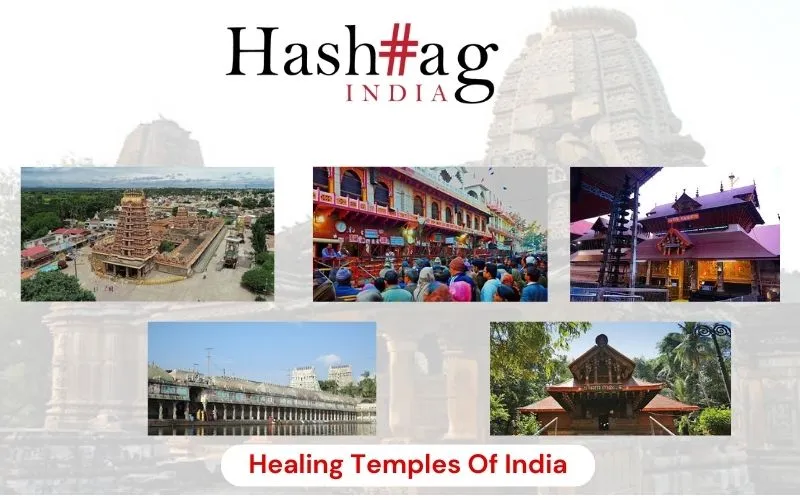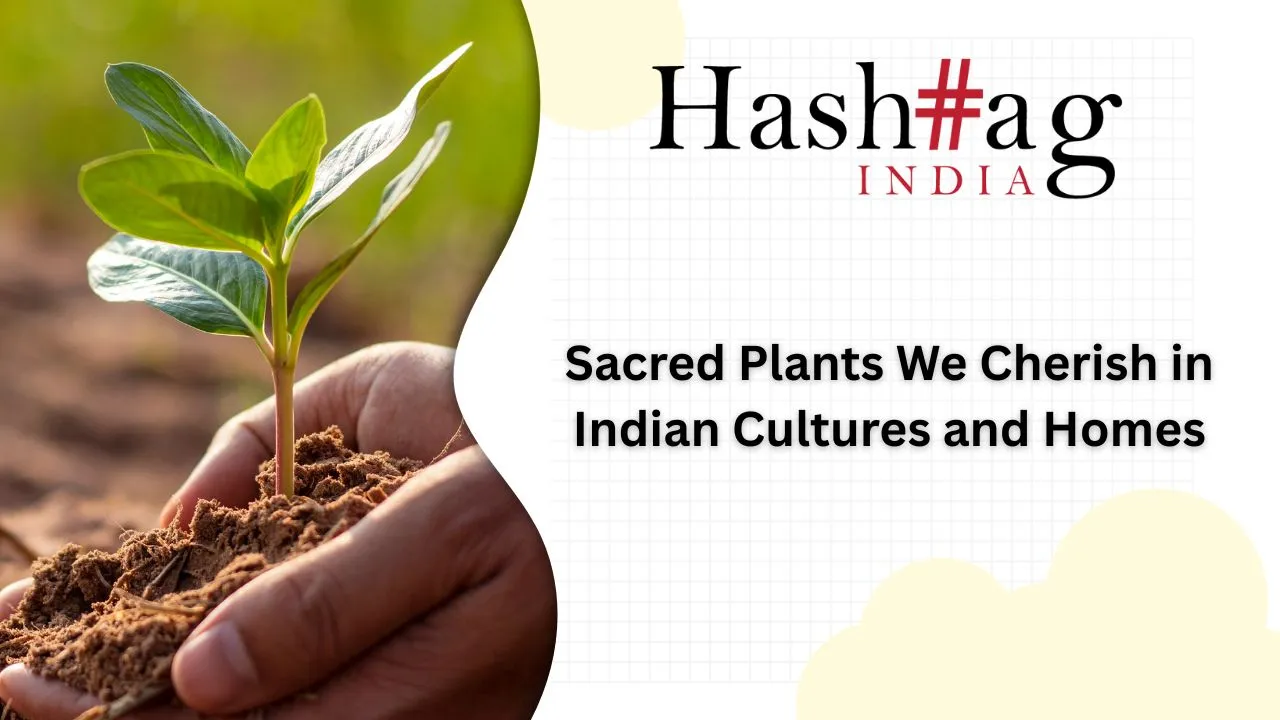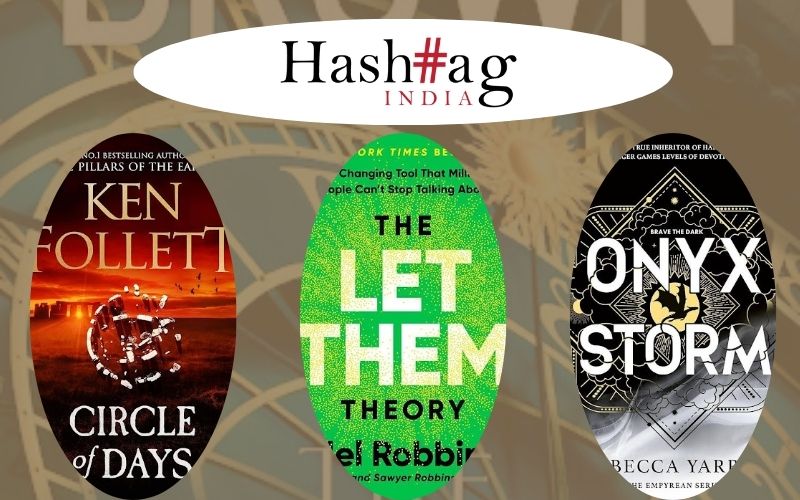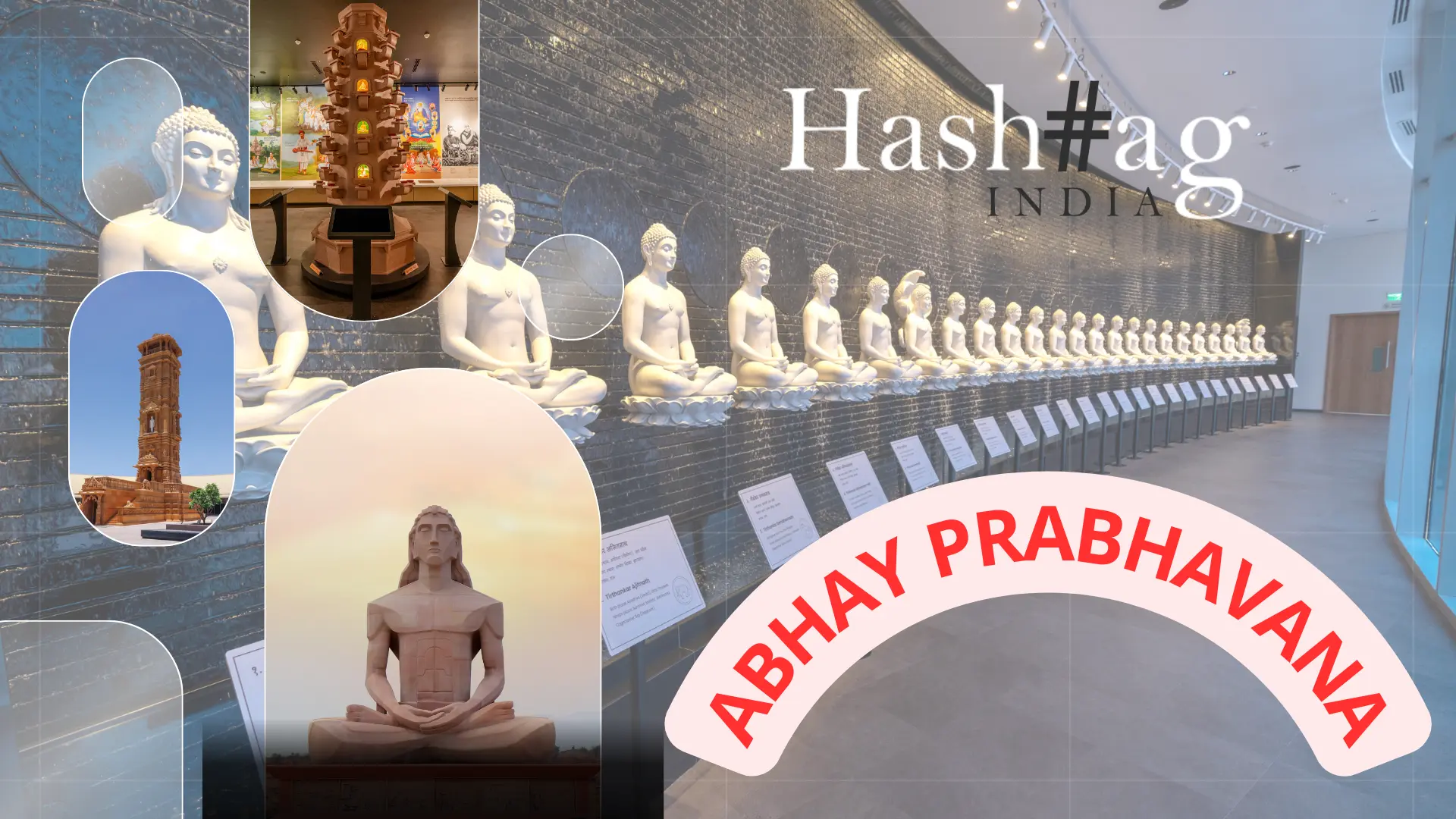India is home to some of the most stunning river islands, offering breathtaking landscapes, diverse ecosystems, and cultural significance. Unlike oceanic islands, river islands are formed by the deposition of silt and sediment over time, creating lush green retreats in the middle of flowing rivers. Whether you seek adventure, tranquillity, or a deep dive into local culture, India’s river islands offer a unique travel experience. Hashtag Magazine lists some of the top river islands in India that you must explore.
1. Majuli Island, Assam – The Largest River Island in the World
Majuli Island, nestled in the Brahmaputra River, is the largest river island in the world. Spread over 880 square kilometres, it is a cultural hotspot of Assam and home to several Vaishnavite monasteries (satras). The island is known for its vibrant traditions, including classical dance, mask-making, and pottery.
Things to Do:
- Visit the historic Kamalabari Satra and Auniati Satra to witness Assamese monastic culture.
- Explore the Mishing tribal villages to experience indigenous lifestyles.
- Witness the Raas festival, a grand celebration of Lord Krishna’s life.
- Enjoy a boat ride along the Brahmaputra and admire the mesmerizing sunset.
Best Time to Visit: October to March (monsoon causes flooding).
2. Umananda Island, Assam – A Sacred Island on the Brahmaputra
Umananda Island, also known as Peacock Island, is the smallest inhabited river island in the world. Located in the middle of the Brahmaputra River in Guwahati, the island is famous for the Umananda Temple, dedicated to Lord Shiva.
Things to Do:
- Seek blessings at the Umananda Temple.
- Take a ferry ride from Guwahati to enjoy stunning river views.
- Spot the rare Golden Langurs, a unique primate species found on the island.
- Capture breathtaking views of Guwahati city from the island.
Best Time to Visit: October to April.
3. Bhavani Island, Andhra Pradesh – A Nature Lover’s Paradise
Bhavani Island, located in the Krishna River near Vijayawada, is one of the largest river islands in India. It is known for its eco-tourism activities, lush greenery, and serene backwaters.
Things to Do:
- Enjoy water sports like speed boating, kayaking, and jet skiing.
- Stay in eco-friendly resorts amidst lush green surroundings.
- Explore the nearby Kanaka Durga Temple, a famous pilgrimage site.
- Experience camping and outdoor adventure activities.
Best Time to Visit: November to February.
4. Munroe Island, Kerala – Backwater Bliss in God’s Own Country
Munroe Island, located at the confluence of the Ashtamudi Lake and the Kallada River, is a hidden gem in Kerala. The island offers an authentic backwater experience, away from the touristy crowds of Alleppey.
Things to Do:
- Take a canoe ride through the narrow canals and enjoy the scenic beauty.
- Visit the famous Kallada Boat Race held during the Onam festival.
- Stay in traditional homestays and enjoy Kerala’s delicious seafood cuisine.
- Explore ancient temples and churches that reflect Kerala’s diverse culture.
Best Time to Visit: September to March.
5. Srirangam Island, Tamil Nadu – A Spiritual Hub on the Cauvery River
Srirangam Island, located between two tributaries of the Cauvery River, is home to the magnificent Sri Ranganathaswamy Temple, one of the largest Hindu temple complexes in the world.
Things to Do:
- Visit the awe-inspiring Sri Ranganathaswamy Temple, a masterpiece of Dravidian architecture.
- Explore the ancient Jambukeswarar Temple, dedicated to Lord Shiva.
- Take a cultural tour to learn about Tamil Nadu’s religious heritage.
- Enjoy authentic South Indian cuisine at local eateries.
Best Time to Visit: October to February.
6. Sivasagar Islands, Assam – A Historical Retreat
The Sivasagar region in Assam, once the capital of the Ahom Kingdom, is dotted with small river islands in the Brahmaputra River. These islands are home to historic temples, palaces, and cultural sites.
Things to Do:
- Visit the Shivadol Temple, one of the tallest Shiva temples in India.
- Explore the Rang Ghar, an ancient amphitheater from the Ahom era.
- Take a boat ride through the river islands and admire the scenic beauty.
- Experience Assamese culture and traditional crafts.
Best Time to Visit: November to April.
7. Kavvayi Island, Kerala – An Offbeat Escape in the Backwaters
Kavvayi Island, located in the Kavvayi River near Payyanur, is an unexplored paradise in Kerala. It is surrounded by beautiful backwaters, coconut groves, and charming fishing villages.
Things to Do:
- Go on a houseboat cruise through the serene backwaters.
- Visit the nearby Valiyaparamba beach for a peaceful retreat.
- Interact with the local fishermen and learn about their way of life.
- Enjoy a relaxing stay in a riverside resort or homestay.
Best Time to Visit: October to March.
8. Hope Island, Andhra Pradesh – A Coastal River Island
Hope Island is a small yet significant river island in the Godavari River estuary near Kakinada. It serves as a natural barrier against cyclones and tsunamis for the Andhra Pradesh coastline.
Things to Do:
- Explore the pristine beaches and enjoy the serene atmosphere.
- Take a boat ride to spot exotic bird species and marine life.
- Visit the Coringa Wildlife Sanctuary, known for its mangrove forests.
- Experience fishing with the local community.
Best Time to Visit: November to February.
Conclusion
India’s river islands offer a unique blend of natural beauty, adventure, and cultural heritage. Whether you seek spirituality, adventure, or simply a peaceful retreat, these islands have something for every traveler. From the world-renowned Majuli Island to the hidden gems like Munroe Island and Bhavani Island, each of these destinations provides a different experience that is worth exploring.
So, the next time you plan a trip, consider visiting one of these incredible river islands and immerse yourself in their unparalleled charm!


